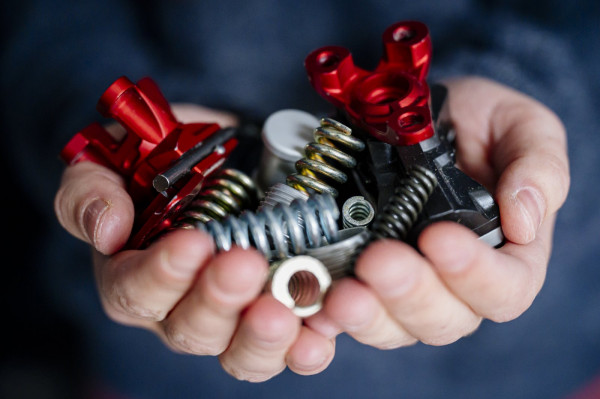11/24/2020 Ripping Ligaments and Snapping Bones
By Jason Borro, Skimo Co Owner
Tech Binding Release – Part 1: Introduction
While nearly all alpine and alpine-touring ski bindings have release mechanisms, skiers today can still be injured when bindings fail to release. For various reasons, there is silence and confusion within the industry and consumer public regarding the level of injury protection bindings actually provide. I decided to investigate, with focus on tech (pintech) bindings.
Quickly reaching the limit of standard ski shop release check tools, I reached out to Rick Howell of Howell Ski Bindings. Rick is an independent binding engineer and maintains a suite of research equipment designed to test ski binding release. His equipment simulates various standard release tests as well as investigate loads pertaining to the knee. The latter goes above and beyond the requirements of existing international standards.
We tested a variety of tech bindings using a Scarpa Rush boot with a BSL of 314 mm. Using one boot for all the tests eliminated the variance that can be seen across tech fittings due to manufacturing differences. SCARPA boots are equipped with Dynafit Quick-Step-In fittings which are thought to operate well with most tech bindings. In-person inspection of the fittings and observation of their release behavior verified this to be true.

Results of Howell’s testing are best displayed as graphs. Above, you are looking at a sample two-dimensional “release envelope,” generated by pulling laterally along a ski at increments of 10 centimeters. The boot is held fixed by a metallic rod that represents your tibia (main lower leg bone). Depending on the scenario, a lateral force can be applied at various points along a ski, simulating torques applied to your leg.
The perfect binding would have a flat line in the graph, meaning it releases at the same tibia torque regardless of where the lateral force is applied. That line would be adjustable up or down based on an indicator setting. But as you can see, in the real world there are peaks and valleys in the envelopes. These peaks and valleys can lead to injury due to non-release. Bindings with lateral release at the toe (most alpine) and lateral release at the heel assisted by the toe (most tech) have different release envelope shapes which result in different injury profiles.
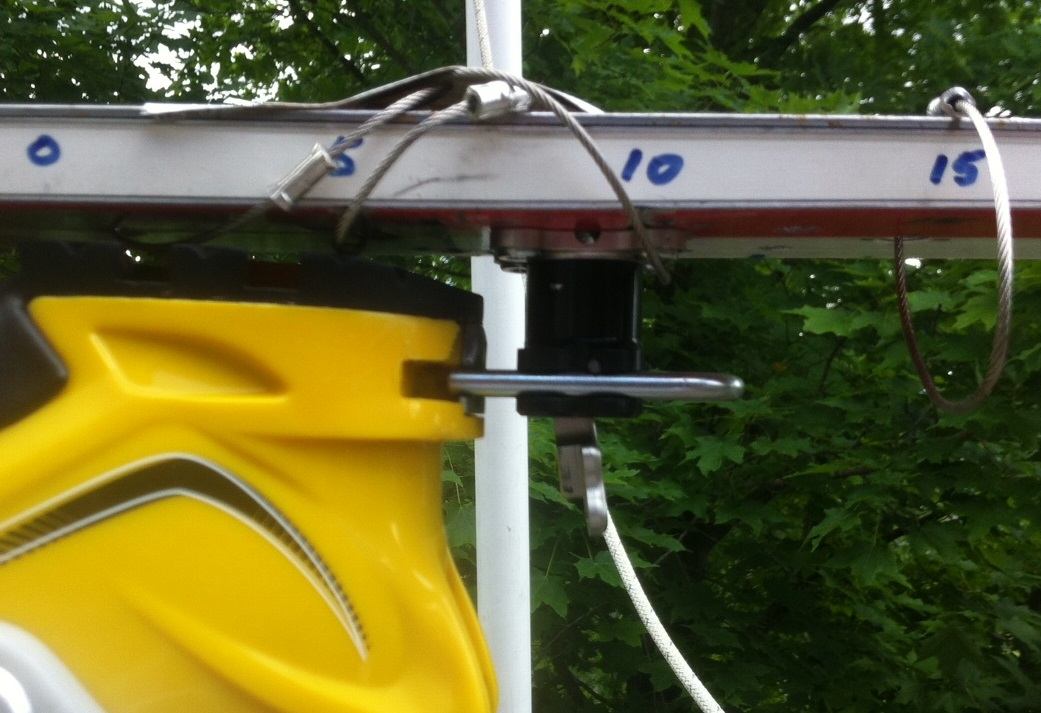
We tested both ski touring and skimo race bindings, with special emphasis on the latter (one pictured above). This is because race bindings without adjustable release have undisclosed permanently set release values that may or may not be appropriate for a given skier’s size and skiing style. We found these values varied greatly.
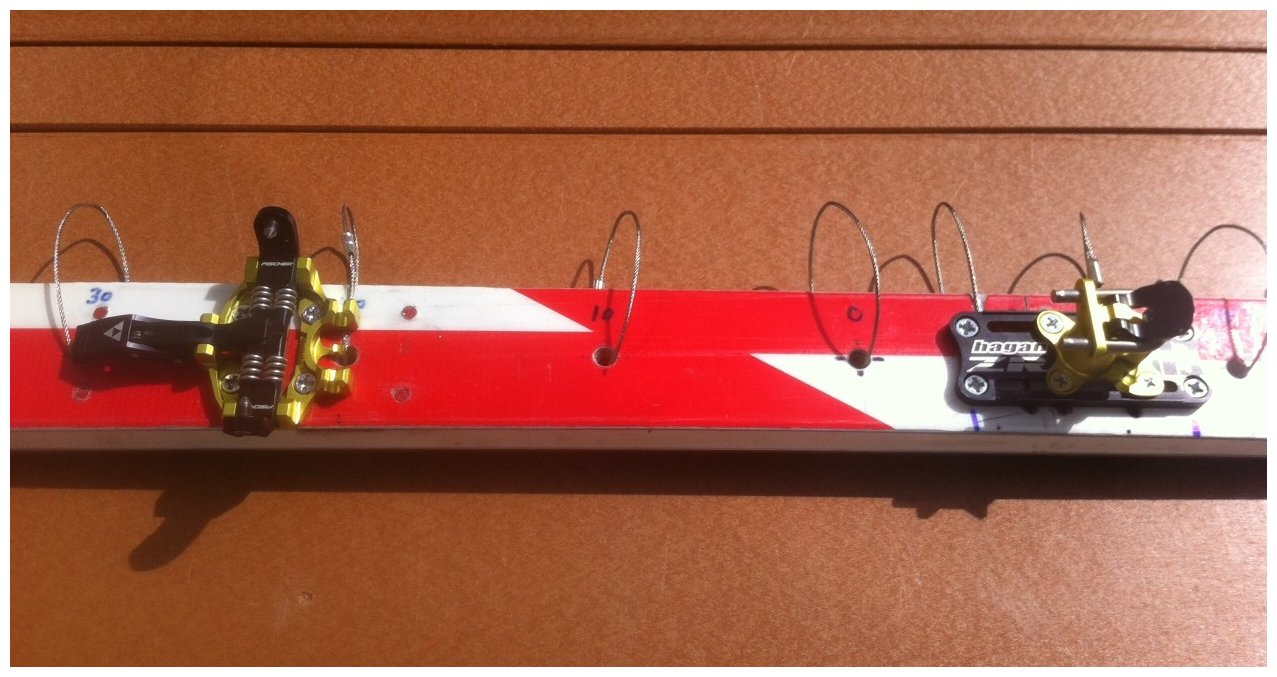
Tech Binding Release – Part 2: Lateral Release & Tibias
The tibia is the primary weight-bearing bone in your lower leg (between knee and ankle). The tibia can break in two primary ways that are of concern to ski binding designers. One is a levered forward fall, or “bending” (covered in a later section), and the other is a twisting fall. (There is also a large combination matrix of twisting-bending falls, but for the sake of simplicity we won’t get into that here).
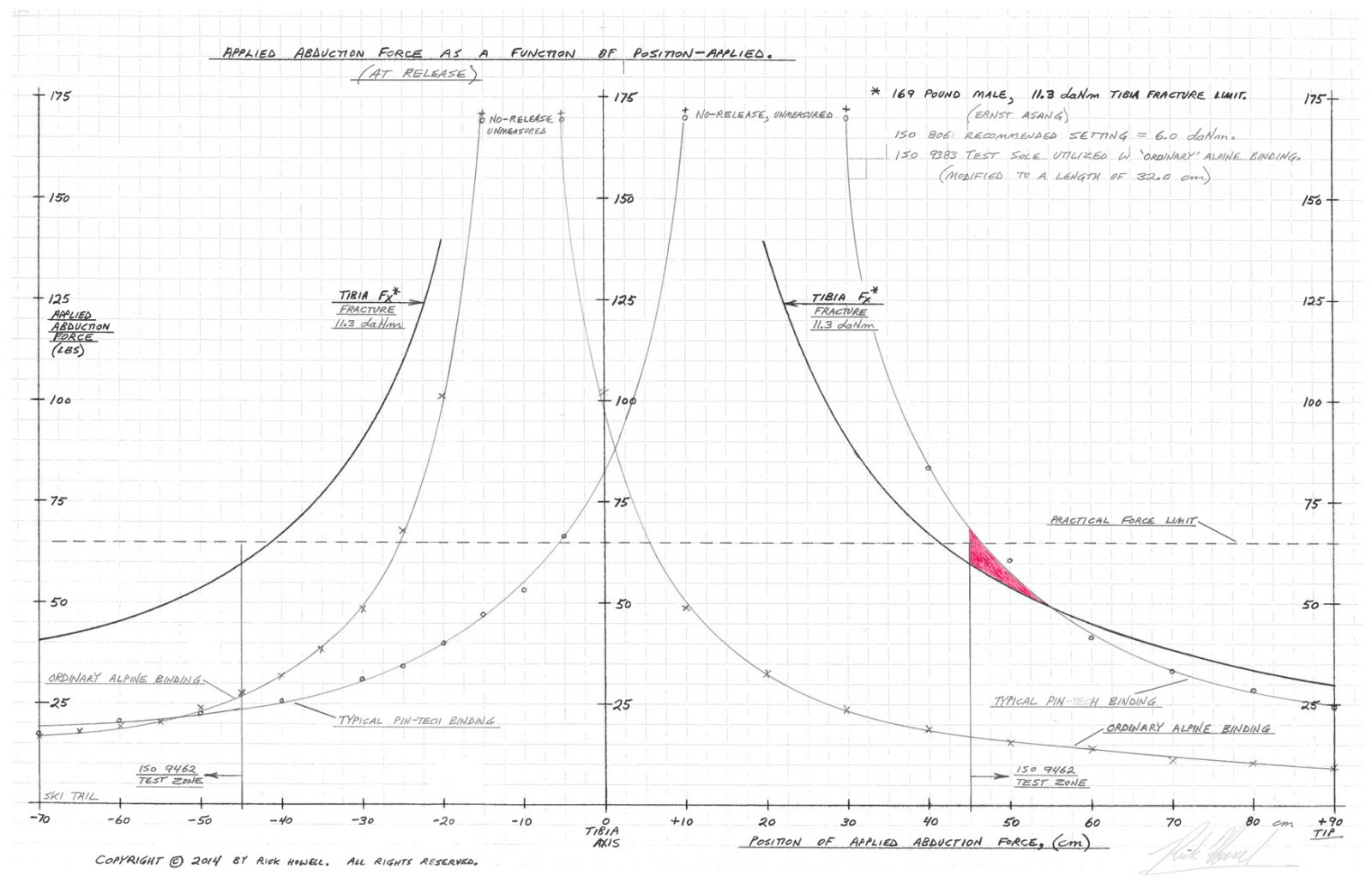
The lateral toe release mechanism on most alpine ski bindings is designed to mitigate bone injury when twisting is involved. However, the function operates quite differently depending on whether the binding releases laterally at the toe versus laterally at the heel. The chart above shows the forces required to initiate a release for an ordinary alpine binding and a sample tech binding (a race binding in this case). As you can see with the lateral heel-release binding (most tech bindings), the force required to generate a release can be greater than the approximate force required to fracture a tibia, labeled “Tibia Fx.” This is because, as could be expected, there is a lateral blind spot for such bindings centered on the toe piece, where the binding will not release. (In real life, you can feel this when doing a release “carpet test” of a tech binding while twisting your leg with emphasis on feeling resistance in the toe.)
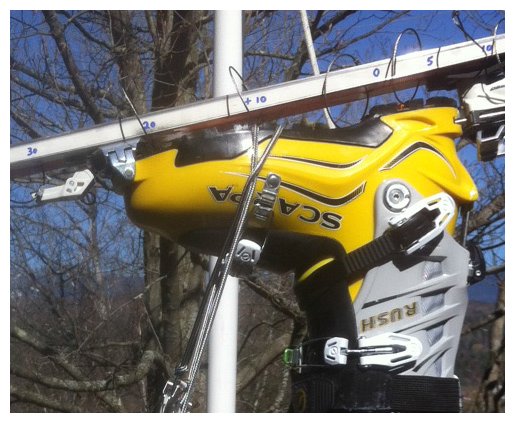
The graph was similar in shape for all the tech bindings we tested. The data was generated by pulling on a ski at 5 to 10 centimeter increments, which profiles the possible locations that forces could be centered upon. The data above proves that it is possible for some of these locations to simulate injury. (The data does NOT predict injury rates, since we cannot say how often things will end up in the red zone. This is left to epidemiology, more on that later.)
Note: forces required to break a tibia near the toe piece are quite high and may not be easily achievable during normal skiing. This is because the distance between the applied lateral force and the axis of the tibia is relatively short. Shorter distances result in lower torques. Also, this laboratory result was generated on a weightless ski: it was not flexed as if in soft snow or loaded as if it was being skied. (Generating the above data at various degrees of ski flex and pre-loads results in a three-dimensional envelope, a more revealing and costly study.)
Tech Binding Release – Part 3: Knees
For our purposes, Howell employed specialized test devices to measure the valgus torques that are associated with ACL strain. Valgus is the biomechanical term for torque about the femur (bone between knee and hip), which is generated by sideways load on a ski. In lay terms, something like “twisted knee,” without lower leg twisting.
The test setup involved a metallic test knee bent at 90 degrees with the upper end of the femur fixed to a test frame. Attached was a metallic tibia and foot, sized for an average U.S. male, which was inserted into our test boot. The boot was clicked into a mounted test binding and the ski was pulled laterally while peak torques were measured during release. These loads were converted to ACL-strain utilizing a special algorithm and then compared to a theoretical ACL rupture limit of an average US male.
Sample result below. As you can see, we were unable to generate the strains necessary to rupture the ACL of an average US male using the Kreuzspitze SCTT race tech binding. This graph shows data within the “sour spot,” the region just behind the axis of the tibia (from -5 to -20 cm) which can produce large valgus torque as well as a small amount of internal rotation and torque about the tibia (think pigeon toes). The test results were similar to the other tech bindings we tested, with a couple of exceptions for bindings that have non-adjustable release values that are too high for the average US male.
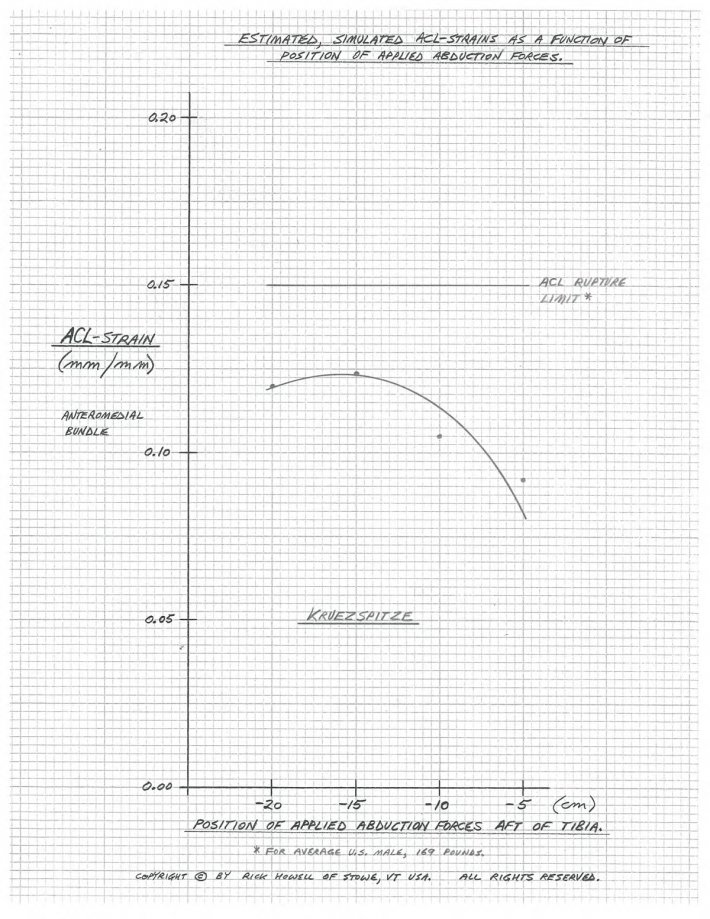
Even in the exceptional cases, the force required to release the binding “poked through” the ACL rupture limit in only a small range of applied force locations within the sour-spot on the ski.
In contrast, ordinary alpine bindings release far over the ACL rupture limit using this setup. This is because basic lateral-toe release design has a lateral blind spot at the heel (opposite situation compared to heel-release tech bindings, with blind-spot at the toe), preventing the ski from releasing in these types of simulated injuries. (Some alpine bindings in development attempt to correct for this by releasing laterally at both the toe and heel. For full disclosure, two of these bindings were designed by Howell.)
To visualize the complete difference between a tech and alpine binding, see the graph below. The grey lines are a full 2D lateral release envelope of a popular touring tech binding. It includes both tibia release torques and valgus release torques. Overlaid on the graph in reddish is data from an ordinary alpine binding. Each black dot shows the peak release torque for a given applied-force along the length of the ski. The dots are connected to form a release envelope. Each binding design produces a unique signature. Both lateral-toe and lateral-heel release designs earn an “OOPS”, the former for knees, and the latter for tibias. You can pick your poison to some degree, but neither binding design will fully protect you from injury.
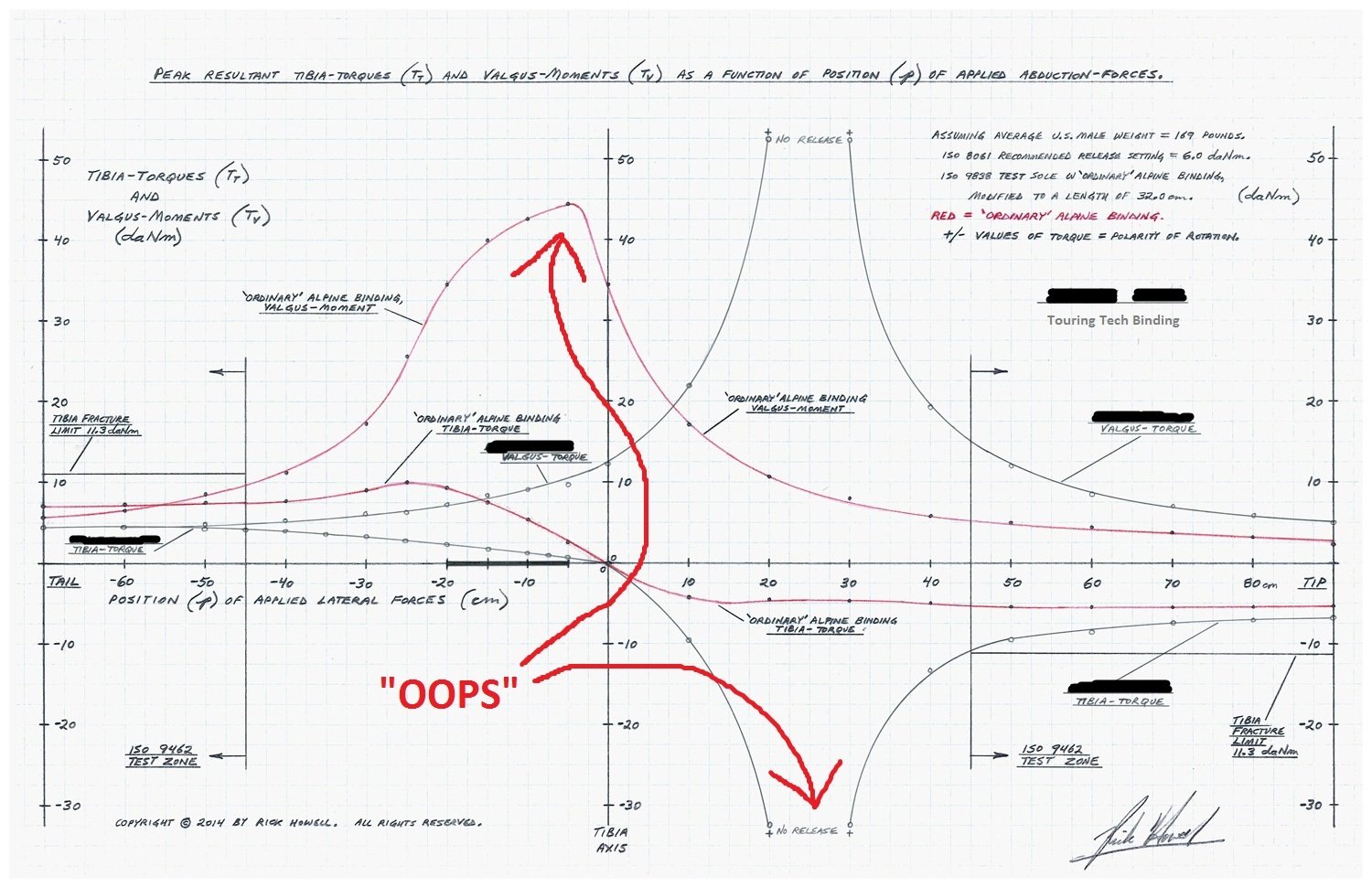
Tech Binding Release – Part 4: Vertical (Forward/Upward) Heel Release
This mechanism on most tech bindings relies on the force required to separate two heel pins the required distance to slip through escape channels in the boot fitting. For non-adjustable race bindings, the force required to actuate a forward release is determined by the kinematics of the binding design and by metallurgy.

We found that race bindings we tested had forward release values running the gamut of possibilities. The values were often different than their lateral counterparts. The lightest binding we tested actually had the highest forward release value. It would probably have an indicator value near 15 if it were adjustable.
The chart below, based on a sample adjustable touring tech binding (not a race binding), compares indicator values to standardized release values. The indicator progression is nicely linear when it comes to forward release, but it consistently tests higher than the ISO standards would expect.
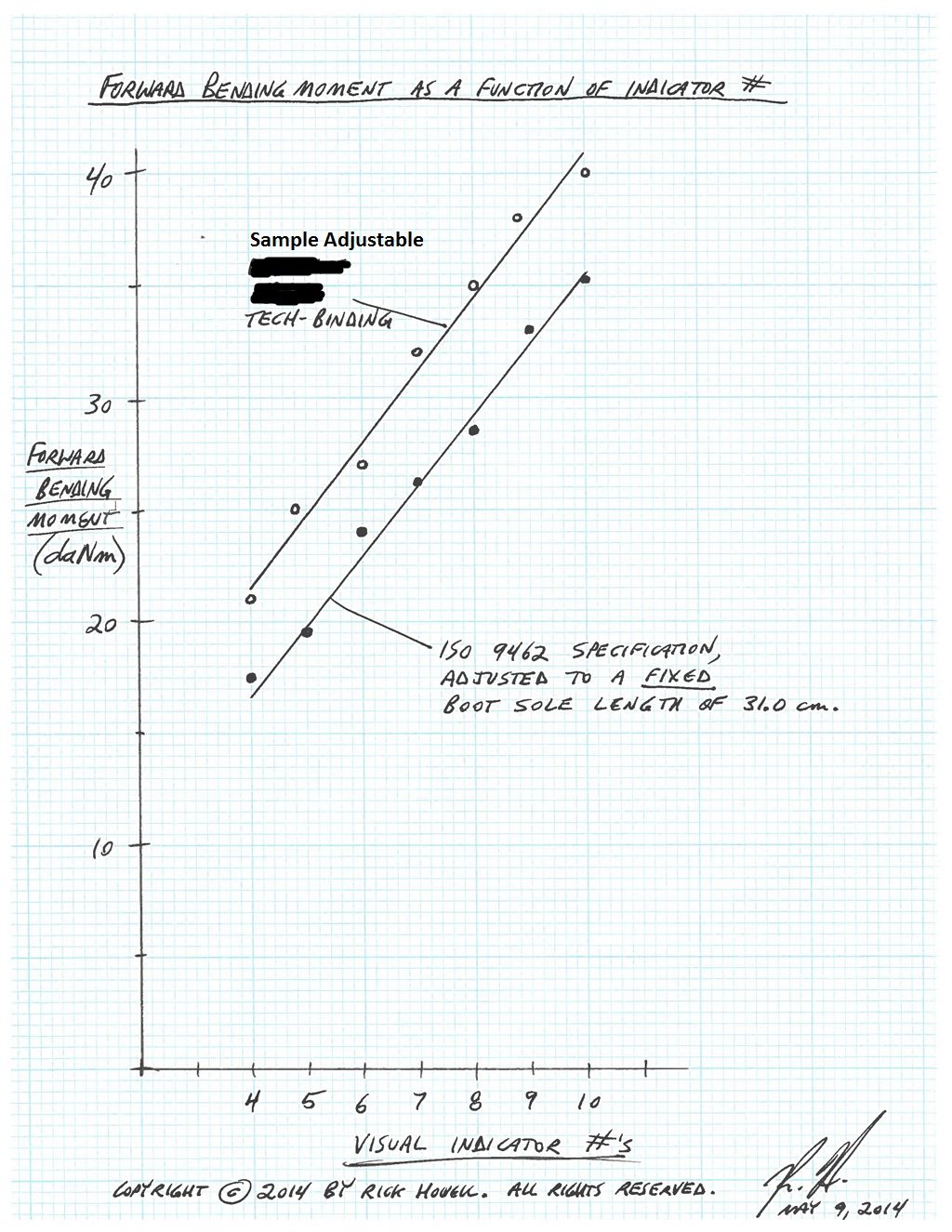
This is consistent with values we see in shop tests. So before you jack up the vertical release on your tech binding on a whim, consider for a moment that it could already be higher than you are led to believe by the numbers printed on the binding.
Tech Binding Release – Part 5: Epidemiology and Conclusions
After scary injury discussions such as those above, it’s important to get some perspective on the frequency of injuries. Below is a table from a 2012 edition of the American Journal for Sports Medicine, containing the latest data from the well-known Johnson and Shealy study at Sugarbush. (For more information regarding Johnson and Shealy, try this link, and this.)
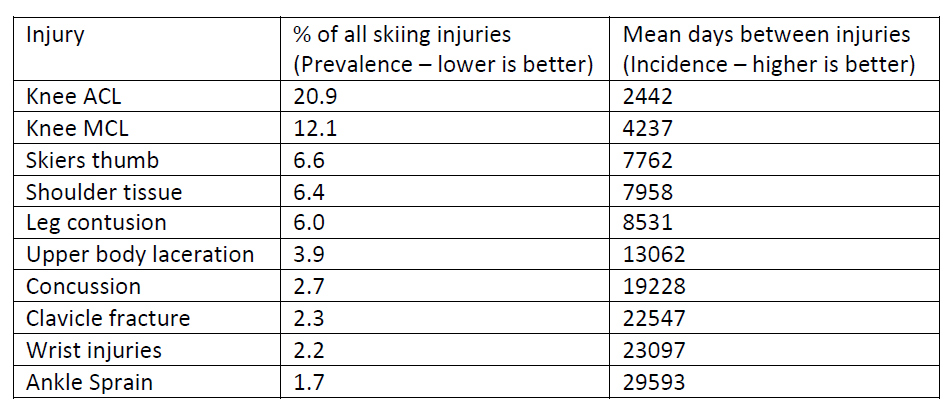
These are injuries that occurred to adults at a resort, primarily on alpine bindings. As you can see, knee injuries are still a problem with ordinary alpine bindings. Tibia fractures, now at around 1.3% prevalence, did not make the top 10 list. Years of biomechanical research and corresponding binding design drastically improved the incidence of that type of injury. That engineering work has since been integrated into various national and international standards.
If lateral-heel release tech bindings became the in-bounds standard, I would predict a tick up in tibia injuries and a tick down in ACL injuries (assuming bindings are adjusted to appropriate levels). Thankfully, the mean time between all types of injuries is large enough to enjoy a lot of turns between them.
For now, I am happy to report that we accomplished our original goal of this biomechanical testing, which was to help skiers find a binding that is appropriate for them. With over 1000 release tests performed on a half-dozen models, we are more confident in guiding folks into bindings based on their size, skier type, and intended use.
I also programmed a release calculator with this notion. Reliable information about the release of tech binding models is especially useful in the skimo world, since many endurance athletes are taking up racing without a strong skiing background — but to compete near the top, they need a foreign binding with undisclosed release mechanics.
Thanks for reading,
Jason Borro, Skimo Co Owner
P.S. Please note this discussion is about release and not retention. Retention is equally if not more important when evaluating ski binding safety, as pre-release can lead to head and upper body injuries, versus the leg injuries discussed above. Skiers are still better off locking their toes in "no fall" terrain. If judged by the groans produced by the testing equipment, the locking mechanisms work admirably when it comes to preventing lateral (twisting) release. Forward heel-release values are unchanged by locking, but you can recover and stomp back in if your toes are locked and the release is not complete.
This article was originally published on WildSnow.com and received 333 comments before being locked.
This article was originally published on 12/22/2014 and was last updated on 11/24/2020.Comments
Thanks for detailed information.
btw did you had a chance to test alpine bindings with different DIN value set for toe and heel piece, e.g. if you set lower value in the toe (6.0 in the toe, 6.5 in the heel). Whether setting 0.5 DIN less in the toe will affect bindings release to be bellow the ACL rupture limit when applying forces in the lateral blind spot at the heel without sacrificing much performance in pre-release when skiing or any other misbehavior of the binding mechanic?
Thanks
I fully plan to return to skiing and ski-touring although I might consider cutting back on jumps a little bit (sic!). Also I do not plan to use pin bindings on hardpack ever again. I am 47 years old and between a potential re-injury of the ACL and a hardware removal surgery 2-3 years down the road, it’s time to start playing on safe-team. At least that’s the plan now, in cast, doing straight leg raises.. :)
Now that I’m largely recovered I’m rethinking my whole quiver and taking the approach “use the right tool for the job” rather than taking the hybrid “bad at both” approach. However I’m curious what you think about Shifts - what compromises do those bindings make on safety compared to a traditional alpine binding when skiing hard inbounds?
Also did you do any testing on the ATK raider? If so, how do they stack up? Thanks!
The Shift is a fully DIN-certified alpine binding in downhill mode, it's graph will look like the alpine one above. The Trab TR1 or Fritschi Vipec/Tecton are the only tech/hybrid bindings that would come close to that graph, with the former testing a little more reliably on our Montana machine.
The Raider has a similar graph to the tech bindings above, so the opposite in terms of injury profile. We recommend alpine bindings for inbounds skiing, using the "right tool for the job" theory.
The Trab TR 1 & 2 and Fritschi Tecton on the other hand have lateral toe release which certainly changes the release envelope. There is not an AT binding (and only 1 alpine binding) that works to reduce both types of injury so sadly it's a case of pick-your-poison.
Any examples of this plot for Alpine bindings? Was it possible to produce an “envelope” for the ACL specific test? I’m curious how often alpine bindings were offenders for that test vs the simpler valgus test (red line peaking at 45Nm).
Tech binding designs are quite varied, with some having more elasticity than others which can help with retention on sastrugi. It would be interesting to inspect your setup to see if your pre-release was more of an adjustment issue or design limitation. I'm always happy to do a deep dive with folks on ways to mitigate injury risk.
FYI, there is no type of ski binding (alpine or tech) that is designed to protect bones other than your tibia. They cannot sense forces on your femur, for example.
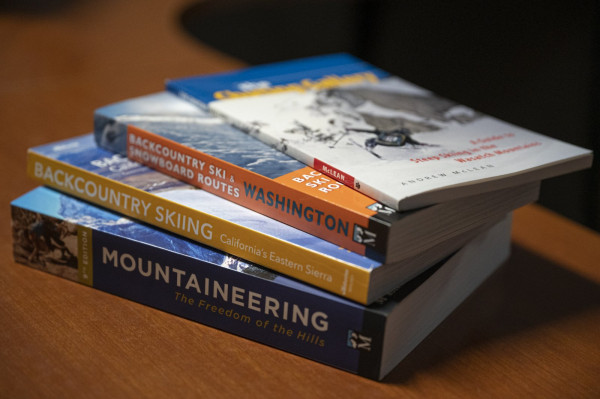
12/14/2020
Guidebook Guide
